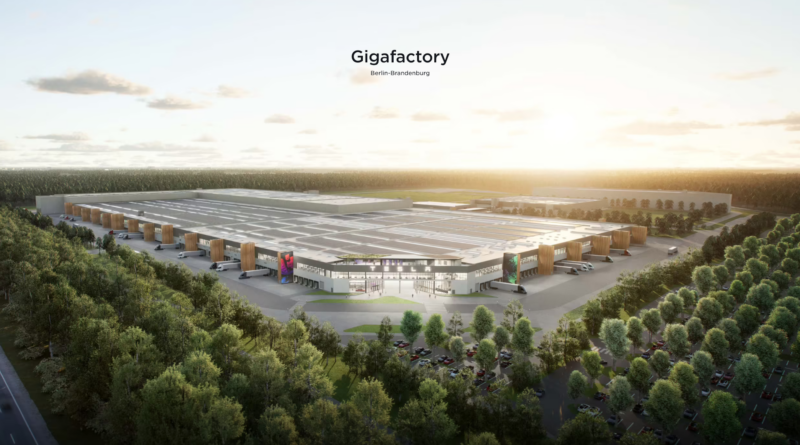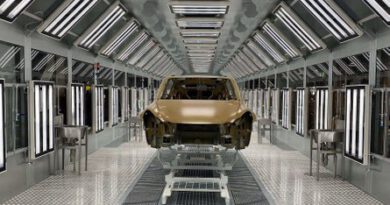Tesla Berlin: What To Expect Now
There are increasing signs that Tesla will soon put the new Gigafactories in Berlin-Grünheide and Austin into operation. At least small reports and observations of the last few days indicate this
What we know so far:
160 Pre-series Model Y spotted in Berlin-Grünheide (Link)9 Pre-series Model Y spotted in Austin (Link)Elon Musk to come to Berlin in mid-February/early March (Link)Delivery date of first pre-orders from Berlin Gigafactory announced as March in an internal Tesla email (Link)
In other words, both Berlin and Austin could be operational as early as February or by March at the latest.
What does that mean now, once the factories go into operation? I would like to analyze the production capacities and the increase of these with Shanghai, generally the productivity (however this is measured) and what this means for German and European manufacturers.
Production Volume: Giga Berlin <-> Giga Shanghai
Tesla’s Shanghai factory has reached a weekly production capacity of over 8,500 cars by the end of 2021, which means 450,000 vehicles throughout the year. In August 2020, the figure had been 2,400 per week. In January 2021, Shanghai was then already producing 25,000 vehicles per month, or around 5,500 units per week.
The target for 2022 could even be well over 9,000 vehicles per week, i.e. 500,000 vehicles per year, and that is a conservative estimate. In September 2021, Shanghai reached a production figure of 50,258 vehicles, i.e. over 11,000 vehicles per week, and 600,000 per year.
The Shanghai Gigafactory has thus demonstrated an impressive ramp-up since the start of production at the end of 2019. This means that production figures of 500,000 units could also be expected for the new gigafactories in Berlin and Austin at the end of 2023.
Car factory productivity
Bloomberg wiederum veröffentlichte Zahlen und Daten, die zeigen, dass die Teslafabrik in Fremont nun die produktivste Autofabrik in den USA darstellt. In der interaktiven Grafik hat nun Tesla mit 8.550 produzierter Autos pro Woche die Spitzenposition vor Toyota mit 8.427 in Georgetown, Kentucky, BMWs Spartanburg, South Carolina mit 8.343 und Fords 5.564 in Dearborn, Michigan übernommen. Damit käme Fremont auf über 400.000 Autos pro Jahr.
The Gigafactory in Fremont is Tesla’s oldest factory; Shanghai, Austin and Berlin-Grünheide are much more modern factories.
Significance for Germany (and Europe)
Based on these comparative figures, a similar production figure of between 400,000 and 500,000 units could possibly be expected in Berlin by the end of 2023. With a view to Shanghai, this would mean that 100,000 to 200,000 vehicles could be expected to be produced in Berlin-Grünheide as early as this year.
The German market will be flooded with Teslas, and buyers who have been hesitant to buy a Tesla made in the U.S. or China could now abandon their reluctance. For the other German manufacturers, this could increase the pressure. The electric car blog electrek had an analysis on this a few days ago, comparing the current sales figures in Germany of various electric cars and suppliers. Frederic Lambert from elektrec concludes his analysis with the sentence:
I wouldn’t be surprised if Tesla is in the top auto brands in Germany by the end of 2023, which would have inconceivable just a few years ago.
FUTURE ANGST
Welche aktuellen Ängste prägen uns? Mit welchen Ängsten waren die Menschen in der Vergangenheit konfrontiert, als es die heutigen Technologien noch nicht gab? Warum mischen wir heute im Wettbewerb der Kulturen um neue Technologien nicht ganz vorne mit? Welche Maßnahmen müssen wir ergreifen, um neue Technologien nicht als etwas Beängstigendes und Feindseliges zu betrachten, sondern als ein Mittel zur Lösung der großen Probleme der Menschheit?
Ab sofort erhältlich im Buchhandel, beim Verlag und bei Amazon.
This article was also published in German.



